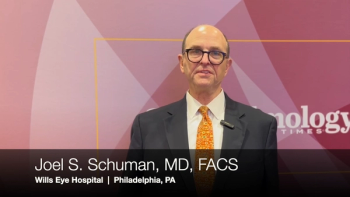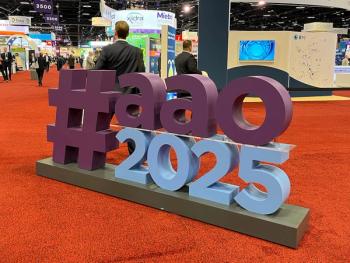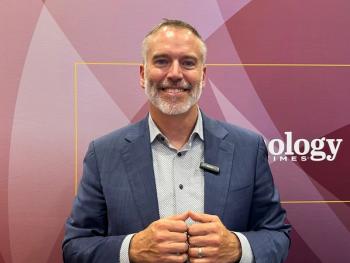
Steroid may introduce risk of intraocular pressure spikes post-surgery
Results of a randomized study comparing medication protocols for cataract surgery suggest that adding a corticosteroid to a regimen composed of twice-daily bromfenac 0.09% with a fourth-generation fluoroquinolone provides no extra benefit for controlling inflammation but increases the risk for IOP spikes on the first day after surgery.
The study was conducted at the Westfield Eye Center, a private, teaching practice in Las Vegas, and included 137 patients randomly assigned to three groups. All patients received bromfenac with topical gatifloxacin 0.3% (Zymar, Allergan). One group received no corticosteroid, a second used prednisolone acetate 1% (Pred Forte, Allergan) q.i.d. with a tapering course, and the third received a single intraoperative, subTenon's injection of triamcinolone acetonide (Kenalog). The topical medications were all started preoperatively and continued for 10 (antibiotic) to 14 (bromfenac and prednisolone) days.
Patients were evaluated at 1 day, 1 week, and 1 month after surgery with assessments that included IOP measurement and slit-lamp exam. Optical coherence tomography (OCT) was performed at baseline, 1 week, and 1 month. Inflammation in the anterior chamber was rated using the Summed Ocular Inflammation Score (SOIS), and macular inflammation was assessed by the foveal thickness measurements.
IOP elevation on postoperative day 1 was greater in the corticosteroid groups than in the patients not receiving corticosteroid, and while the difference between groups only showed a trend toward statistical significance, it achieved statistical significance in a subgroup analysis of patients with glaucoma, said Dr. Duong, a clinical instructor of ophthalmology at the Westfield Eye Center, and a lecturer of neuroscience, anatomy, and physiology, Nevada State College, Henderson.
"Most cataract surgeons in the United States use a triple-medication regimen including a fourth-generation fluoroquinolone to prevent postoperative endophthalmitis and a topical corticosteroid and nonsteroidal anti-inflammatory drug (NSAID) to prevent cystoid macular edema (CME), although all of these treatments are off-label," Dr. Duong said.
"The findings of this randomized study suggest that the corticosteroid may introduce risk without adding benefit," he said. "However, this is a small study, and investigation in a larger population with longer follow-up is needed to confirm the results."
The study was well-designed. In addition to randomly assigning patients to treatment, which resulted in three well-matched groups, one surgeon, Kenneth Westfield, MD, performed all of the surgeries, and a single certified technician was responsible for the IOP measurements and OCT imaging.
The analyses were based on a per protocol population of 111 patients. Excluded patients were either lost to follow-up after returning to their primary ophthalmologist for postoperative care or used the wrong medication or their assigned medication incorrectly. The number of patients excluded from each treatment group was similar.
The SOIS data showed a peak mean score of just over 2 in all groups on postoperative day 1, with means decreasing to <1 by 1 week after surgery, and no evidence of anterior chamber inflammation at 1 month.
IOP measurements showed the greatest increase from baseline IOP occurred on postoperative day 1 in all groups, with mean elevations of 7 mm Hg among patients who received topical corticosteroid and 6 mm Hg in the group that received the single injection, while patients who received only the NSAID and antibiotic had a mean 3 mm Hg IOP elevation. By 1 week, mean IOP values returned to baseline in all groups.
Newsletter
Don’t miss out—get Ophthalmology Times updates on the latest clinical advancements and expert interviews, straight to your inbox.



















































.png)


